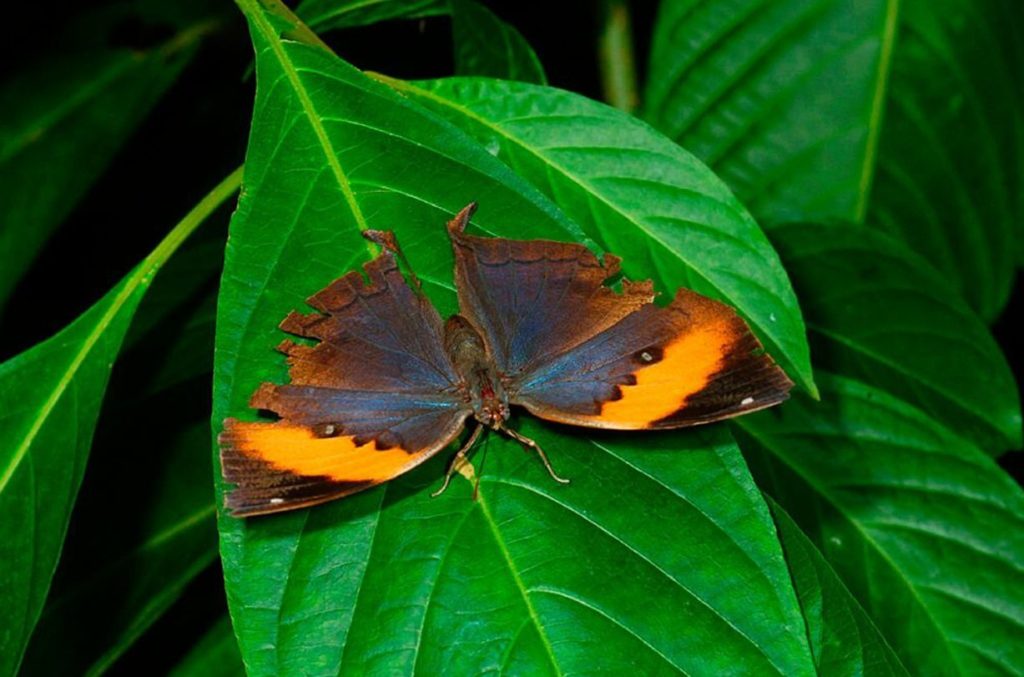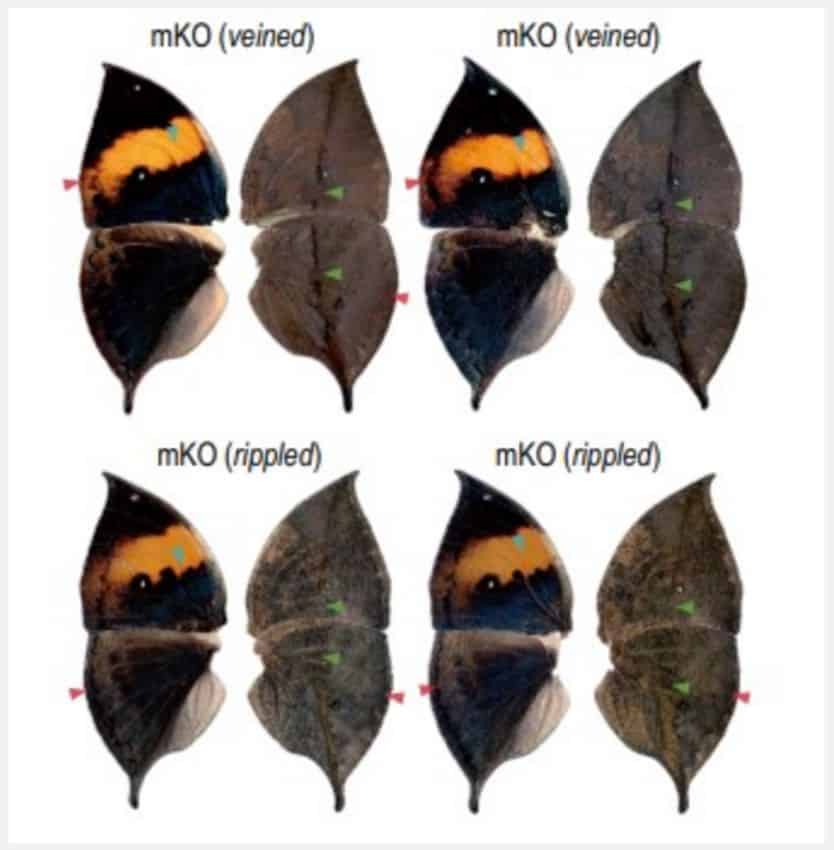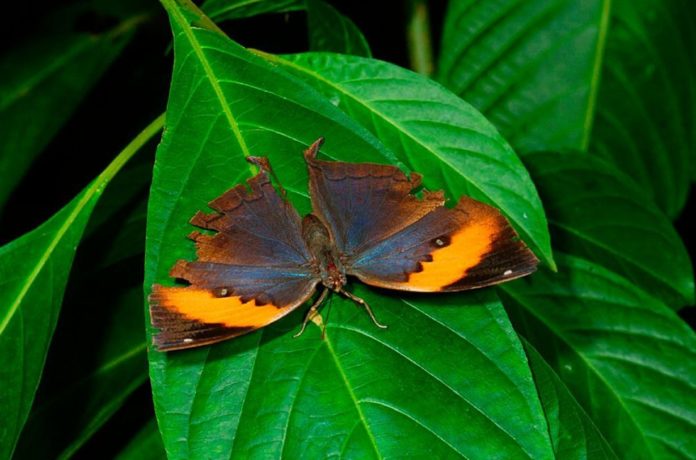The Kallima butterfly has brightly colored wings on top, with bands of deep blue, black, and orange.
The undersides of this butterfly’s wings, however, stand out sharply as it flaps its wings. They are hues of dull brown that precisely mimic a dead leaf, hiding the butterflies from predators.
In a study that appears in the journal Cell today, researchers identify the gene that causes Kallima butterflies to resemble leaves and describe what this means for our understanding of their evolutionary history.
“Butterfly wings have relatively simple structures,” says Wei Zhang, “but this simple structure is responsible for some very complex functions: locomotion, thermoregulation, mate preference, and predator avoidance.

“Because these wings are structurally simple,” adds the researcher from Peking University in China, “but functionally complex, I think butterfly wings are the ideal system to address multiple evolutionary questions.”
The scientists gathered Kallima samples from 36 distinct species around Asia in order to comprehend the evolution and genetics underlying the oak leaf butterfly’s extraordinary capacity for self-masking.
After sequencing the genomes of these butterflies, researchers focused on a gene called cortex that appeared to be in charge of the various leaf patterns.

The butterfly population is undergoing intriguing morphological changes as a result of the stresses of evolution on this gene.
Multiple Kallima species have this leaf wing polymorphism, however distinct species may have varying phenotypic frequencies, according to Zhang. “I think this is due to the proliferation of specific plants in particular habitats, so the butterflies will gain more protective benefits by having different frequencies of wing phenotypes.”
The researchers concentrated on the eastern Himalayas as a center for Kallima butterfly diversification. They were able to investigate the evolution on a smaller scale than usual since they discovered so much variation in one region.
“We generally focus on biodiversity at a macroevolutionary level,” adds the researcher. “But we seldom have cases that illustrate in detail how species diversity and genetic diversity originated in such a diversity hotspot.”
Zhang and her team plan to keep investigating how wing patterns and coloring alter in various habitats and with various plant species.
“We would like to understand how these genes facilitate, and originated, such beautiful diversifying wing patterns,” she adds.
Image Credit: Getty
You were reading: Scientists Now Know What Genes Make Butterfly Wings Look Like Leaves
